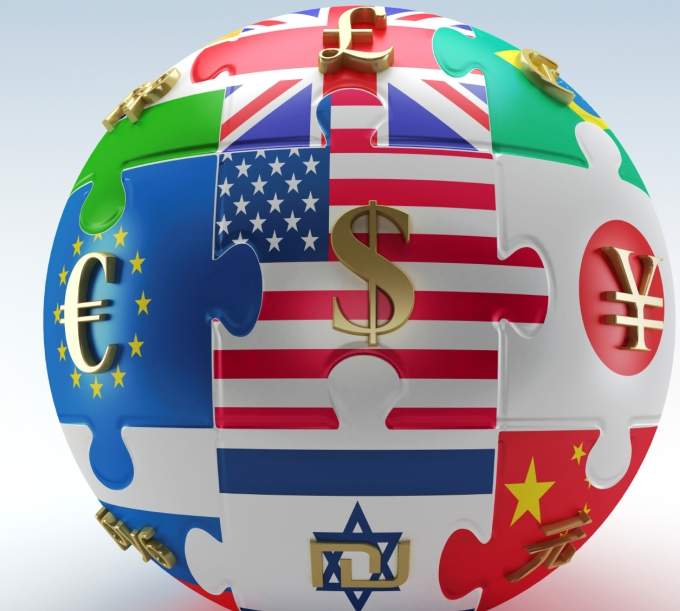
The significant returns that can be delivered by investing in fine art and wine, as well as better tax treatment in the case of art investments, is generating increasing interest and focus from HNW clients as they diversify and broaden their investment strategies.
Research by Private Banker International (PBI) shows an increasing appetite by the HNW community to invest in collectible assets closely aligned to their passions.
Art followed by wine are the most popular categories, with other luxury items such as vintage cars, and luxury watches losing traction.
Auction sales
It is not hard to see why private banks are bullish in their outlook for the art market.
Sales in the global art market reached $63.7bn in 2017, up 12% from 2016 according to research consultancy Arts Economics.
How well do you really know your competitors?
Access the most comprehensive Company Profiles on the market, powered by GlobalData. Save hours of research. Gain competitive edge.

Thank you!
Your download email will arrive shortly
Not ready to buy yet? Download a free sample
We are confident about the unique quality of our Company Profiles. However, we want you to make the most beneficial decision for your business, so we offer a free sample that you can download by submitting the below form
By GlobalDataThe Knight Frank Luxury Investment Index for Q4 2017 shows that art made a comeback after lagging behind luxury cars earlier in the year.
So what is prompting renewed interest in art investments?
Xavier Ledru, managing director at Swiss private bank REYL & Cie, says: “We have seen an increase in the volume of transactions above $10m for the past years, which is a fairly recent but significant trend showing that art can be seen not only as a means to hold value, but can also generate significant returns.
Ledru adds: “The multiplication of eight figure sales can be explained by the growth of a new category of wealthy collectors from Asia, in particular China, the Middle East or the Silicon Valley, all chasing the same trophy artworks.”
Marco Abele, Founder and CEO of TEND, a co-ownership investment platform for precious platforms, comments: “Appreciation in art is driven, not only by public interest generated by media coverage of the astonishing prices being achieved at auctions, but also by a growing awareness, accessibility and passion for it. That interest and passion is also the case for collectible wine and particularly across Asia.”
Lorenzo, Sconci, chief art officer and co-founder of gallery ArtWallet based in Dubai, attributes “fiscality” as a main factor in increasing demand for artworks.
Better tax treatment
Sconci comments: “Those investing in works of art enjoy better tax treatment than those who invest in equity or real estate markets. Individuals who invest in works of art in fact practically do not pay taxes on capital gain and the share of invested assets is not taxed. In the income tax return, neither ownership nor possession of works of art is indicated.”
Sconci says 37% of global wealth managers own numerous works of art.
Sconci says the amount invested in art and collectibles was $1.6trn in 2016 and will grow to $2.7trn by 2026.
Art Platforms
April 2018 saw an innovation in the art investment sector when online art news platform HAPPENING TECHNOLOGIES launched a wealth management product- called Artist Profiles- to connect financial investors to players in the art market.
Artist Profiles provides advice on buying and selling, the valuation of works and on risk management.
Commenting on the outlook of the art market, Happening Technologies’ CEO, Adeline Pilon says:
“We have seen that the art market has become polarized. In 2017, the top 10% of HNW individuals owned 88 percent of the world’s wealth, leaving just 12% of the world’s wealth for the remaining 90% the global population.
Pilon continues: “2018 is likely to reinforce this current trend: “Wealth owners will continue to absorb most of the existing liquidities and so fuel a polarised art market.”
REYL has also innovated in the sector by launching Griffin Art Partners (GAP), an art-lending vehicle which issues notes directly backed by physical pieces of art.
Art backed notes are issued by GAP to refinance itself and provide fixed returns (typically 6-10 percent per annum over a period of one to three years.
Ledru comments: “GAP lends 30 to 50% of the estimate of a given art piece or collection, which allows a comfortable buffer for investors in case of default or loss of value.”
Finite Supply
Ledru says: “Although collectibles are sensitive to economic downturns, their supply is fixed while demand for them is growing on the long-term.”
Ledru adds: “We are seeing an increase in requests from private clients and family offices interested in collectibles. Art is one of the most appealing collectibles because it is more liquid and accessible than others, such as gems or wine where passion still plays an important role.
He continues: “The segments on which we have seen amazing returns during recent years are classic cars and luxury watches. However, they may have reached the peak of their cycle. High-end art is traditionally a more resilient collectible which remains attractive.”
According to Knight Frank’s report, wine has replaced classic cars as the top collectible with prices surging about 25% in the last year.
Recent sales of wines from the cellar of William Koch reached $22m, and a 10 bottle case of 1945 Chateau Moutin Rothschild sold for $343,000, exceeding the $120,000 estimate, Ledru said.
According to consulting firm Capgemini, HNWI wealth will surpass $100 trillion by 2025, with about 10% invested in collectibles.
Mohammad Kamal Syed, head of global markets at Coutts Private Bank, comments: “Fine wine makes a good investment because there is always a finite supply. Some estates produce only 2,000 cases a year, which might sound a lot, but that’s for the entire world.
Syed adds: “Some produce only 200. A great aspect of wine is that even at its most expensive it’s a relatively affordable luxury, and that’s very rare in today’s world.”
John Godfrey, director and regional centre head at Barclays Wealth and Investment Management, says: “Many see wine as being uncorrelated to global stock markets and in an environment of geopolitical uncertainty and after such a strong run from equities over the last 10 years, wine is perceived as offering the potential for positive returns irrespective of what happens elsewhere.
Godfrey adds: “The supply of top wines cannot increase, supply is limited by production and once wines are consumed, their scarcity increases whilst they also typically improve with age – all driving the value and ultimately price up all things being equal.”
“En primeur”
Godfrey comments: “Buying fine wine ‘en primeur’ or in bond, means no duty or VAT is payable, a significant saving as a cellar expands. Keeping wine stored professionally is vital – provenance is equally vital when investors come to sell down the line, as well as maintaining the wine’s integrity as it matures.”
Godfrey adds: “Trading fine wine is now much easier than before with a number of sophisticated trading platforms available and a strong selection of quality wine merchants, able to advise and assist in broking sales and purchases. Liv-ex also provides more transparency in terms of the price of fine wine and therefore investors are better able to monitor the price and value of their investment.”
But he warns: “2013 was a particularly poor year with values falling sharply as measured by the Liv-ex 100 Fine Wine Index. The sharp fall in the pound following Brexit also made it more expensive for UK wine investors to purchase ‘en primeur’.
“Buying ‘en primeur’ is itself risky as you are buying wine well in advance of it being bottled and hitting the market and the price could well be lower than the year or two previous when it was bought.”
Godfrey says Burgundy- wines made in the Burgundy region in eastern France- will perform better than French Bordeaux wines. Both wines are major players in the wine world.
“This has been seen to a degree in terms of market share with top Bordeaux falling to under 70% of the traded market in a recent Liv-ex report and Burgundy rising to 12.5%. Whatever the trend, the top fine wines are likely to be well bid whether Romanée-Conti or Petrus, due to their limited quantities and the difficulty of finding available stock.”
Pilon says: “The wine world has developed an entirely global market that is more and more transparent with increasingly educated consumers. Databases are numerous and provide key information and analysis for investments. Transparency has always been a cornerstone for any market and the wine market seems to be a step ahead of the other collectibles sub-sectors.”
In an era where investors are looking to diversify, but combine their personal passions, art and wine will thrive.
But as with any investment, Godfrey points out a key risk of buying wine in bond is that once the wine is bottled, the price could be a lot lower and investors could lose out.
Another key concern with collectibles is illiquidity, as Ledru warns that clients should “keep a balanced allocation at all times,” and in the case of art focus should be on well-known artists who enjoy stable prices.
Fast facts
- In May, the Amadeo Modigliani’s 1917 painting Nu couché (sur le xscôté gauche) was sold for $157.2m at Sotheby’s, an American auction house and one of the world’s largest brokers of collectibles.
- This follows the record sale of Leonardo da Vinci’s Salavtor Mundi bought for $450m in November 2018








